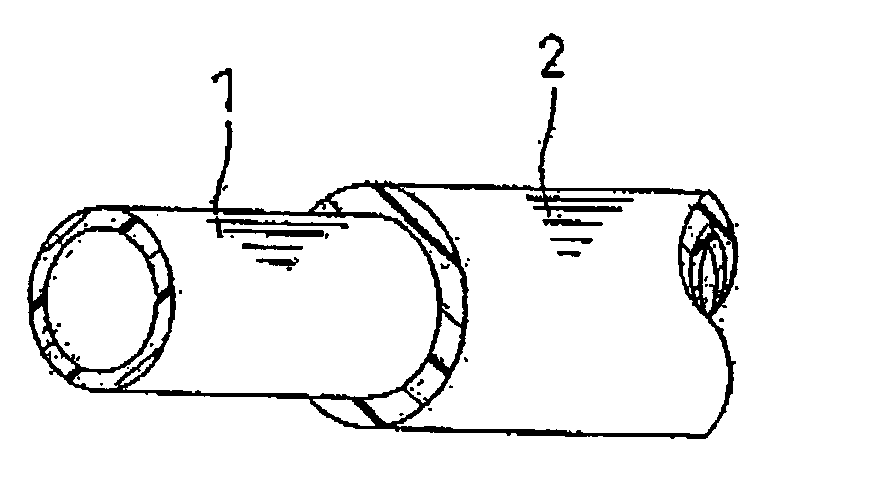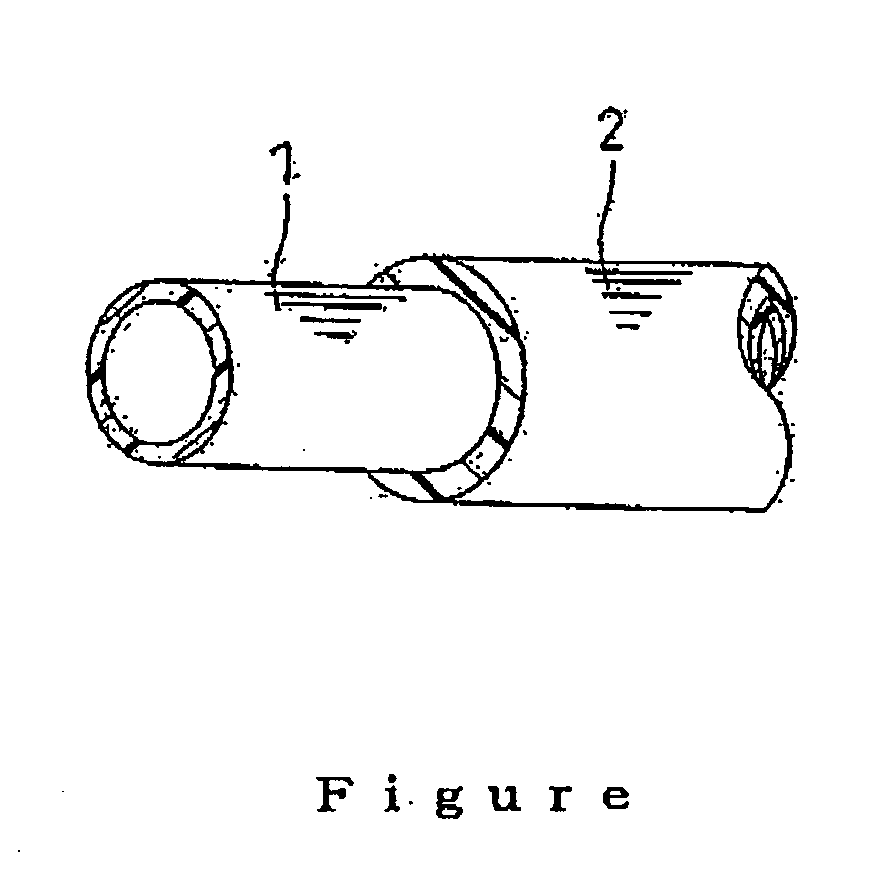Automotive fuel hose and method for producing the same
a technology for fuel hoses and automotives, which is applied in the direction of liquid fuel feeders, machines/engines, applications, etc., can solve the problems of high cost, increased cost, and difficulty in quality control, and achieves the improvement of low-permeability resin layers, low-permeability resin layers, and the effect of reducing cos
- Summary
- Abstract
- Description
- Claims
- Application Information
AI Technical Summary
Benefits of technology
Problems solved by technology
Method used
Image
Examples
examples 1 to 26
, COMPARATIVE EXAMPLES 1 TO 5
[0073] The materials for forming each layer were prepared as shown in the following Tables 5 to 9. Next, each material was tandem extruded by means of an extruder (In the case of resin / rubber, an inner layer resin was extruded into a hose shape in a sizing water bath and rubber was coated on the outer periphery thereof. In the case of rubber / resin, inner layer rubber was extruded into a hose shape by means of an extruder and a resin was coated on the outer periphery thereof. The third layer or more was sequentially coated on the outer periphery of a two-layer hose. If the third and forth layers were formed by a resin, they may be co-extruded.), and was vulcanized at 160° C. for 45 minutes for obtaining an automotive fuel hose (having an inner diameter of 6 mm) having a low fuel permeability resin layer and a rubber layer. In addition, in the fuel hoses of Examples 16 to 18, an outer layer was formed by PA12, and an adhesive layer composed of a blend of P...
PUM
| Property | Measurement | Unit |
|---|---|---|
| outer diameter | aaaaa | aaaaa |
| outer diameter | aaaaa | aaaaa |
| outer diameter | aaaaa | aaaaa |
Abstract
Description
Claims
Application Information
 Login to View More
Login to View More - R&D
- Intellectual Property
- Life Sciences
- Materials
- Tech Scout
- Unparalleled Data Quality
- Higher Quality Content
- 60% Fewer Hallucinations
Browse by: Latest US Patents, China's latest patents, Technical Efficacy Thesaurus, Application Domain, Technology Topic, Popular Technical Reports.
© 2025 PatSnap. All rights reserved.Legal|Privacy policy|Modern Slavery Act Transparency Statement|Sitemap|About US| Contact US: help@patsnap.com


